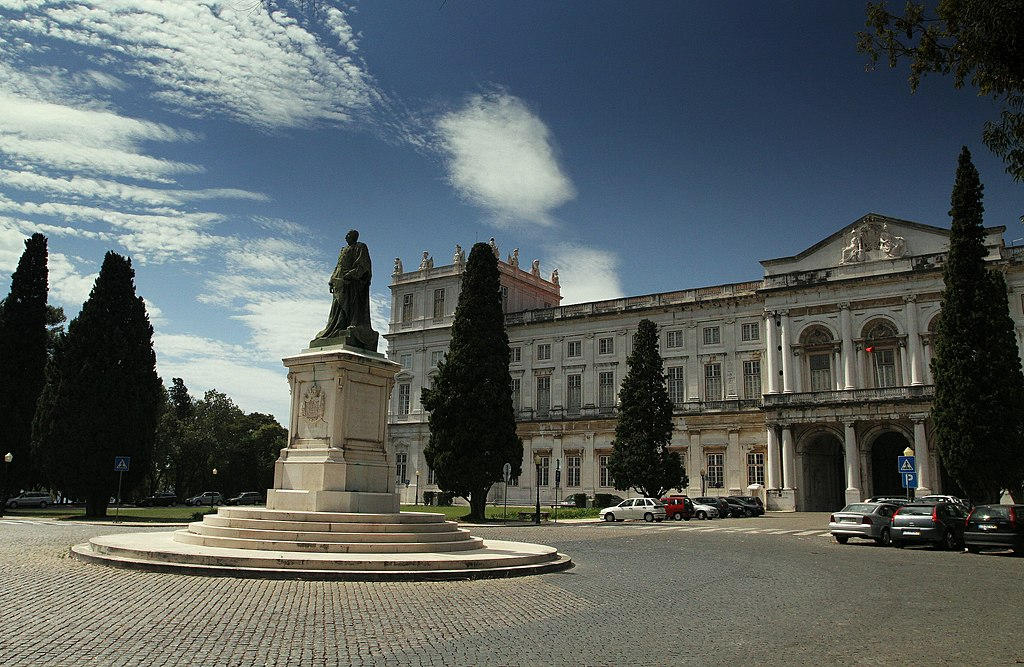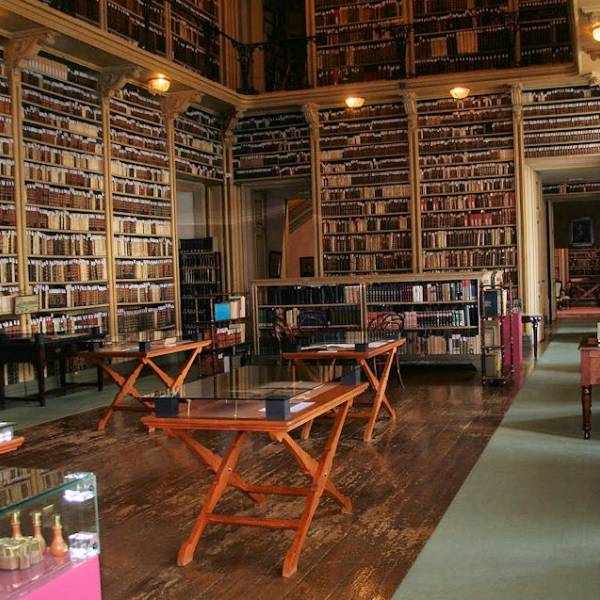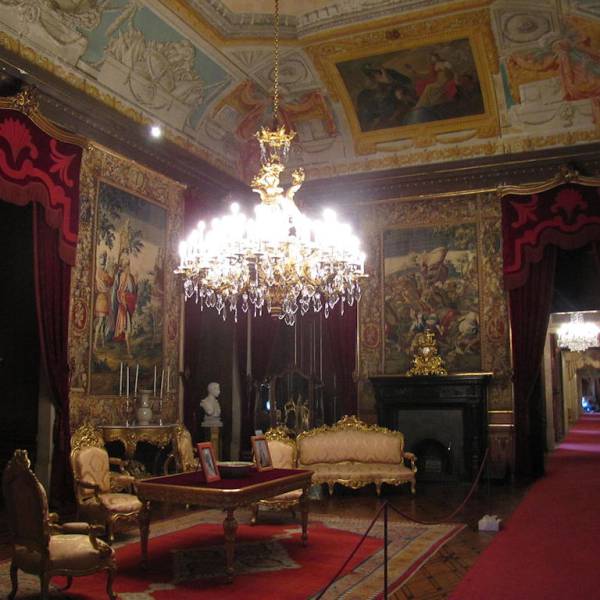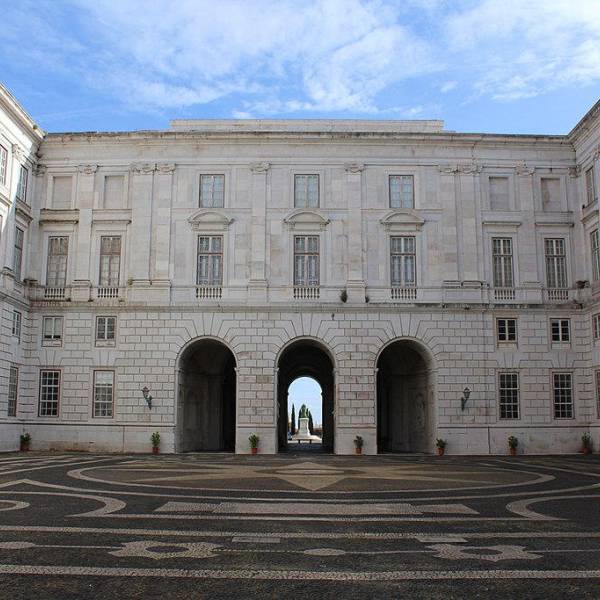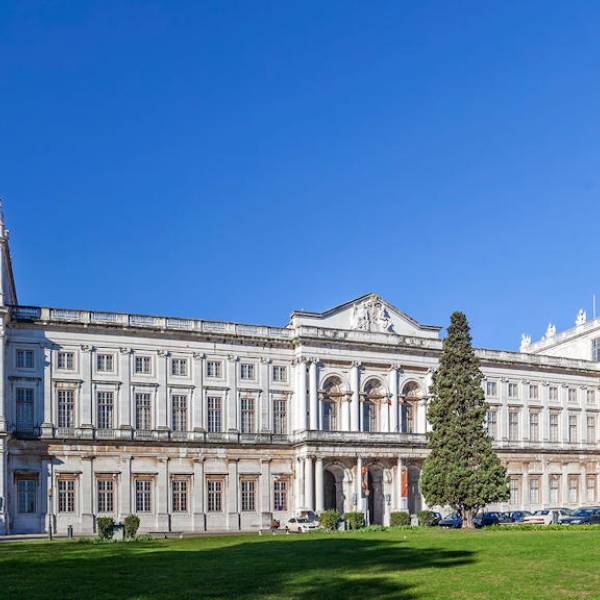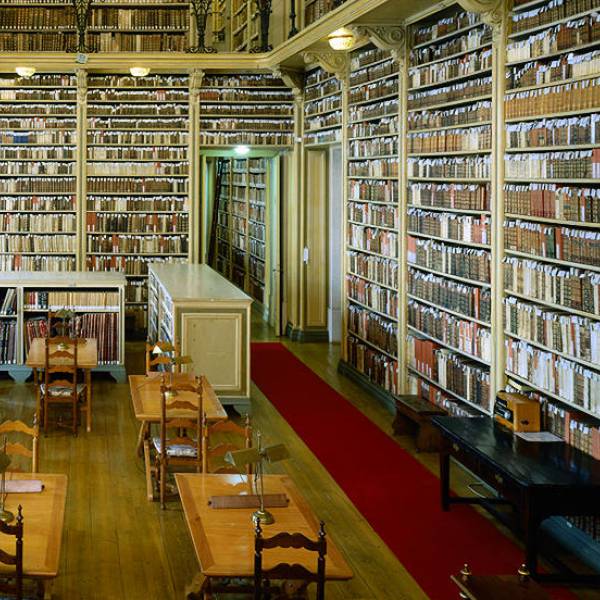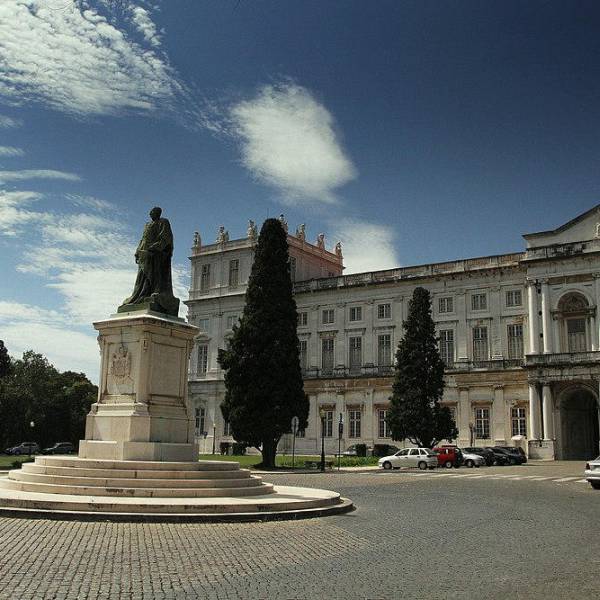On November 1, 1755, the devastating 1755 Lisbon earthquake struck, causing widespread destruction in the city. Fortunately, the Royal Family was in Belém at the time and managed to escape the calamity. Deeply disturbed by the events, King Joseph, the successor of King John V, developed a fear of residing in masonry structures. In response, he sought refuge in a temporary wooden cabin near the Palace of the Counts of Óbidos. Recognizing the need for a more secure residence, the King ordered the construction of a permanent wooden building in the elevated area of Alto da Ajuda.
The architects Petrónio Mazzoni and Veríssimo Jorge were entrusted with the task of creating an elaborate wooden structure for the Royal Family. They utilized wood collected from the Vale de Figueira pinery to build what became known as the Real Barraca or Paço de Madeira (Wooden Palace). The construction was completed on September 20, 1761, with the chapel witnessing its first baptism. However, due to concerns over structural integrity, the theatre was later rebuilt between 1767 and 1786 by Giacomo Azzolini.
The Royal Family resided in the Wooden Palace for nearly three decades, enjoying the opulence of the golden age of enlightened despotism until the death of King Joseph in 1777. Queen Maria IPeter III, lived in the Palace of Queluz at the time of Joseph's demise, resulting in the abandonment of the Royal Barraca.
Lisbon.vip Recommends
Work on the new palace began in July 1795, with the clearing of rubble and preparation of the site. The cornerstone was laid on November 9, marking the official start of construction. Manuel Caetano de Sousa led the project initially, but after his death in 1802, Costa e Silva and Francisco Xavier Fabri took over as the official architects.
The architectural style of the National Palace of Ajuda underwent changes and refinements over the course of its construction. Originally conceived as a Baroque - late Rococo building, the plans were simplified and the ornamentation was made more refined and dignified. The palace was designed around two courtyards, creating a harmonious and balanced structure.
In addition to the architectural aspects, the palace also showcases exquisite artistic contributions. Paintings were commissioned to adorn its walls, with renowned artists such as Domingos Sequeira and Vieira Portuense tasked with creating stunning works of art. Decorators from Italy, Manuel da Costa, and Giuseppe Viale, were hired to embellish the interior of the mansion, while talented sculptors like Machado de Castro and Joaquim José de Aguiar crafted intricate sculptures that added to the grandeur of the palace.
The construction of the National Palace of Ajuda faced numerous challenges and setbacks. Conflicts between architects, difficulties with contractors, and changing architectural preferences contributed to delays and modifications in the project. However, despite these obstacles, the palace gradually took shape and became an architectural masterpiece.
Today, the National Palace of Ajuda stands as a symbol of Portugal's regal heritage and serves as a museum that allows visitors to step back in time and experience the splendor of the royal court. Its beautifully decorated rooms, intricate architectural details, and stunning art collections provide a glimpse into the country's rich cultural past.
The construction of the National Palace of Ajuda is not just a tale of architectural achievement, but also a testament to the resilience and creativity of the people involved. It stands as a proud reminder of Portugal's history and cultural legacy, inviting visitors from around the world to admire its beauty and immerse themselves in the grandeur of a bygone era.


